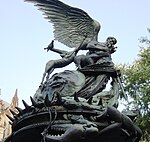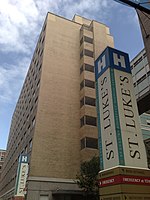Avalon Morningside Park
2007 establishments in New York CityApartment buildings in New York CityMorningside Heights, ManhattanResidential buildings completed in 2007Residential buildings in Manhattan

The Avalon Morningside Park is a luxury apartment building constructed in 2007 on a piece of land that formerly constituted a portion of the cathedral close of the Cathedral of St. John the Divine in the Morningside Heights neighborhood of Manhattan, New York City. The building, a twenty-story glass tower, can be seen from Morningside Park nearby. The Cathedral initially retained ownership of the land, with AvalonBay Communities holding a 99-year lease. In 2019, the land was sold, as well. The diocese explained that it was in desperate need of the $130 million generated by the project, which aroused considerable opposition in the surrounding community.
Excerpt from the Wikipedia article Avalon Morningside Park (License: CC BY-SA 3.0, Authors, Images).Avalon Morningside Park
Cathedral Parkway, New York Manhattan
Geographical coordinates (GPS) Address External links Nearby Places Show on map
Geographical coordinates (GPS)
| Latitude | Longitude |
|---|---|
| N 40.802222222222 ° | E -73.961388888889 ° |
Address
Avalon Morningside Park
Cathedral Parkway
10025 New York, Manhattan
New York, United States
Open on Google Maps











